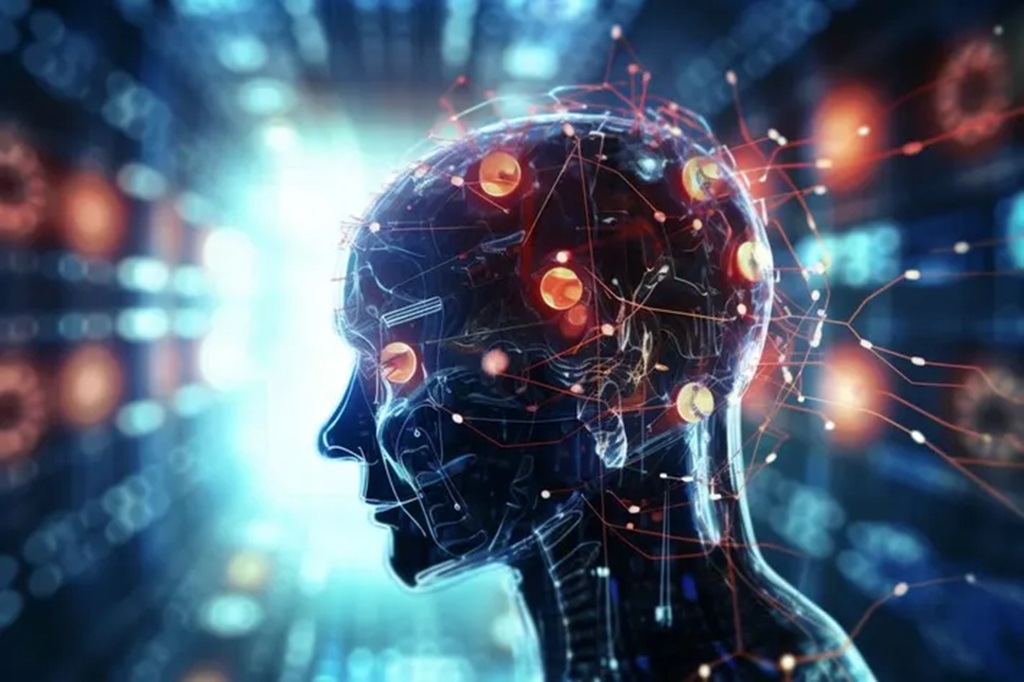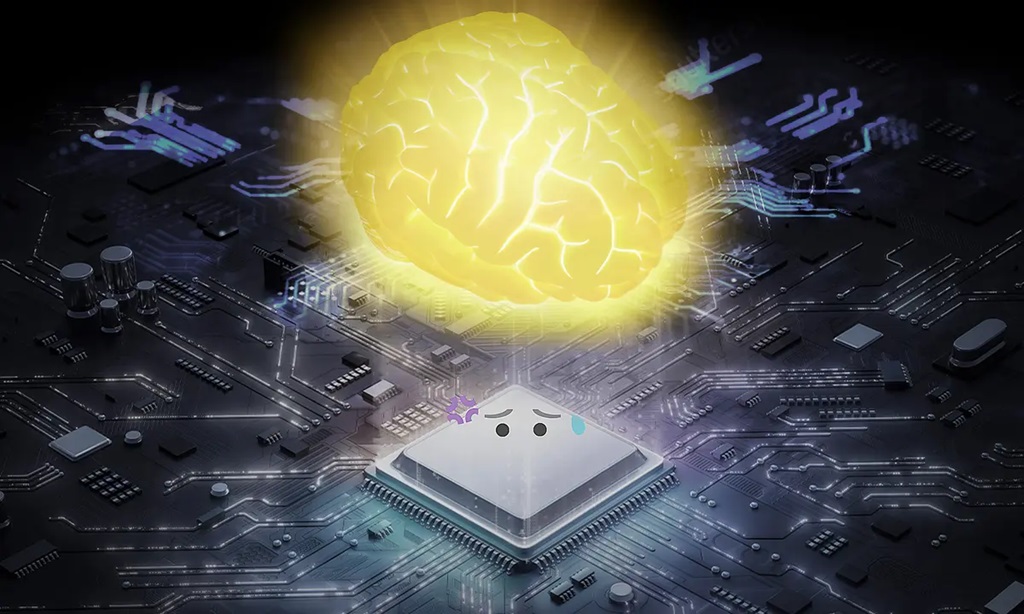Technology has come a long way in the past few decades. From smartphones to electric vehicles, new innovations seem to emerge every year that blow our minds and change how we live. But of all the tech developments in recent history, one stands out as perhaps the most advanced and remarkable of them all: the human brain.
The Complexity of the Human Brain: Technology on Earth

The human brain is often referred to as the most complex object in the known universe. This three-pound organ consists of around 86 billion neurons and thousands more support cells and pathways. The sheer scale of the connections and interactions happening within our heads every second is astounding.
To put it into perspective, the Milky Way galaxy has around 100 billion stars. So the number of neurons in the average brain rivals the number of stars in our galaxy! And each one of those neurons can connect with thousands more, passing signals through an intricate web of 100 trillion synapses.
The Processing Power
This intricate biological machine has unrivaled processing power and speed. The brain’s neurons combine to process information at speeds over 260 million meters per second. That’s faster than the speed of light and faster than the speed of an electrical signal traveling down a fiber optic cable.
Modern supercomputers may be able to perform specific tasks faster than the human brain. But they still can’t come close to matching its flexibility, efficiency, and broad capabilities. Scientists estimate the total computational power of the brain to be in the exaflop range – that’s over a billion billion operations per second! Pound for pound, nothing man-made comes even close.
The Software
Not only is the “hardware” of the brain extremely advanced, but so is the “software” – all the coded information and algorithms that run on this powerful organic computer.
The brain needs to encode, store, and process tons of complex information. This includes everything from sensory input, memories, learned skills, emotions, and cognitive abilities like reasoning, creativity, and language.
To manage all of this, the brain runs immensely intricate algorithms, neural networks, and cognitive programs. Many experts consider the brain’s “software” to be even more impressive than its raw computing power. Our minds have capabilities that the most powerful artificial systems still struggle to replicate.
Unique Capabilities of the Human Brain: Technology on Earth
Beyond its speed and complexity, the human brain also stands out for its remarkable capabilities that go far beyond any AI or computer:
Creativity
The human brain has an unmatched capacity to imagine, innovate, problem-solve and create. It can synthesize disparate ideas and experiences to generate novel concepts and original works of art, literature, music and more that capture the imagination. AI systems are making great strides, but human creativity still reigns supreme.
Emotional Intelligence
Our brains give us the ability to feel, express and interpret emotions in ourselves and others. This emotional intelligence is essential for forming relationships, empathy, social bonding, moral reasoning, and reading subtle social cues – things AI systems cannot match.
General Intelligence
Unlike AI which is narrow or specialized, the human brain has powerful general intelligence. Its flexible neural networks allow it to adapt to all kinds of environments and tasks. Where AI only focuses on specific goals it’s designed for, human brains have open-ended cognitive skills.
Intuition
The human mind has a remarkable capacity for intuitive understanding – making jumps based on incomplete patterns, subconscious processing, or “gut feelings”. Intuition allows us to act without concrete data and arrive at insights that logic alone cannot. This instinctive ability remains difficult for analytical AI to replicate.
Self-Awareness
Perhaps most impressive is the human brain generates a sense of self-awareness and consciousness. Our minds allow us to reflect on our own existence, mortality and purpose in ways no machines can.
The Marvel of Conscious Experience: Technology on Earth

Beyond intelligence, the human brain’s ability to have subjective conscious experiences is perhaps its most astonishing and mysterious attribute. Our minds generate a first-person internal world. We don’t just process information – we feel emotions, experience sensations, have thoughts, an inner voice, a point of view. There is something it feels like to be us.
This ability to have sensations, feelings and inner experiences – our “qualia” – is incredibly hard to explain scientifically. And it is fundamentally impossible to replicate in any AI system. Their internal workings lack the properties needed to produce subjective experience, emotion and sentience. They may act intelligently, but no amount of processing power allows a computer to feel.
Some compare consciousness to a movie playing in our minds, or a virtual reality. It is an emergent property of the brain’s billions of neural connections, greater than the sum of its parts. Exploring the mechanisms behind this phenomenon remains a deep mystery.
The Hard Problem of Consciousness: Technology on Earth
The Human brain’s conscious experience represents a major unsolved puzzle known as the “hard problem of consciousness”. There is still no consensus on what properties give rise to our first-person subjective experience. Some theories posit it is related to quantum effects or properties like integrated information. But the mechanisms remain extremely difficult to measure or test scientifically.
Consciousness stands as the most significant capability dividing biological and artificial intelligence. As advanced as they grow, AI systems will remain disembodied processors without a subjective point of view or sensations. Discovering how brains generate first-person experience while computers cannot is a key challenge facing neuroscience.
The Brain’s Operating System: Technology on Earth
The human brain does not have an operating system like a computer. But it does run some “software” that organizes information processing:
Memory
Our working and long-term memory systems encode experiences and information in interconnected neural networks. Remembering something alters the structure of these networks. The brain’s memory capacity is immense – holding trillions of bits and pieces of data.
Cognitive Programs
The mind runs innate cognitive “subroutines” or programs for things like facial recognition, language, predicting outcomes, logic, and social cognition. These innate mental algorithms work together to produce complex thought.
Attention
We have top-down attentional control systems that focus our limited mental resources on what’s important – like a spotlight. This allows us to direct concentration despite unlimited sensory stimuli.
Executive Functions
Our prefrontal cortex acts like a hub integrating inputs and coordinating thoughts and behaviors by activating relevant networks. It allows high-level planning, inhibition of impulses, working memory and managing social interactions.
So while not a computer OS, the brain has evolved specialized information processing and coordination methods that allow flexible, general-purpose intelligence to arise from neurons firing together in specific patterns.
Unique Advantages of the Human Brain: Technology on Earth
In addition to its remarkable speeds, network complexity, and subjective experience, the human brain provides some useful advantages over digital systems:
Low Power Consumption
The human brain only uses about 20 Watts of power – enough to light a dim bulb. Computers with comparable processing power could require thousands of times more electricity. The brain is extremely energy efficient.
Compact “Computer”
The brain fits inside our skull and weighs just 3 pounds. Even the most powerful supercomputers fill entire rooms or buildings. For its processing power, the brain takes up very little physical space.
Damage Resistant Design
The distributed nature of the brain’s neural networks allows it to continue functioning fairly normally even if parts are damaged. Severe trauma can impair specific functions, but there is no central CPU. It is also remarkable at forming new pathways through neuroplasticity. So the brain is extremely fault-tolerant compared to most computers.
Self-Organizing Adaptability
The brain can wire and rewire its own connections through growth, learning and neuroplasticity. It adapts organically to its environment versus needing to be explicitly reprogrammed. The brain essentially programs itself to some degree based on inputs and experiences.

How Do We Replicate The Brain?
With all its marvels, can we ever hope to replicate or interface with the human brain artificially?
Brain Simulation
Supercomputers have been built capable of simulating the neural networks of simple organisms. But attempting to simulate an entire human brain remains unrealistic. The complexity, plasticity and sheer processing power required are simply too immense for now. Fully replicating a brain may require technology as powerful as the brain itself.
Neural Implants
Brain-machine interfaces are being developed that allow computer systems to interpret neural signals or stimulate the brain. Current versions are quite crude and simplistic, but the field holds promise. Advanced neural implants could one day restore sensory function, augment human abilities or allow direct brain communication with external devices.
General Artificial Intelligence
Truly replicating the capacities of the human mind would require “general” or “strong” artificial intelligence – machines that match or exceed the breadth of human cognitive abilities. Current “narrow” AI can excel at specific tasks but lacks the general fluid intelligence and reasoning of a human. Developing systems with imagination, common sense, strategy, social skills and general learning capabilities remains a monumental challenge despite much hype and speculation.
Conclusion
The human brain stands unrivaled as the most sophisticated and powerful technology on planet Earth. This three-pound biological marvel humbles any artificial system with its emotional intelligence, reasoning, creativity, conscious experience, and general capabilities. The brain manages to compact immense computational power, memory, adaptive programs, and conscious awareness into a remarkably efficient, fault-tolerant organic computer made of nothing but neurons and synapses.
Replicating all its awe-inspiring capabilities digitally remains unlikely for the foreseeable future. Embarking on a journey through the realm of Startups revolutionizing industries: Disruptive technologies and entrepreneurship, one can’t help but marvel at the parallels between the intricate workings of the human brain—the greatest masterpiece on Earth—and the innovative forces shaping a future where disruptive technologies and entrepreneurial endeavors converge, creating a landscape where our minds feel like magic and represent the pinnacle of biological complexity in the universe.
Frequently Asked Questions
What makes the human brain so advanced?
The human brain is extremely advanced due to its sheer processing power, enormous number of interconnected neurons, fast signaling speeds, adaptive neural networks, immense memory capacity, and ability to have subjective conscious experiences.
How fast is the human brain?
The brain’s neurons combine to process information at speeds exceeding 260 million meters per second – faster than electrical signals or the speed of light. The brain’s total computational power is estimated to be in the range of petabytes per second.
Can we replicate the human brain?
Replicating all the complexity and capabilities of the human brain remains impossible with current technology. While we can simulate simple neural networks, modeling the full scope and plasticity of the brain’s 86 billion neurons could require a computer as powerful as the brain itself.
How much power does the human brain use?
The human brain operates on only about 20 watts, which is enough to power a dim light bulb. In comparison, supercomputers with processing power similar to small parts of the brain can require thousands of times more electricity.
Why can’t computers be conscious like humans?
Today’s computers lack the architecture and properties required to produce subjective experience. Merely having computational power is not enough to generate sentience – there are deep mysteries about how neural complexity gives rise to first-person awareness.
Can computers ever become sentient?
Whether future computer systems can achieve human-like general intelligence and consciousness remains speculative. Developing capabilities like fluid reasoning, common sense, abstract thought, and subjective experience could require fundamental paradigm shifts in AI – current systems are narrowly focused on specific tasks. The nature of machine consciousness evokes philosophical debates we have yet to resolve.


